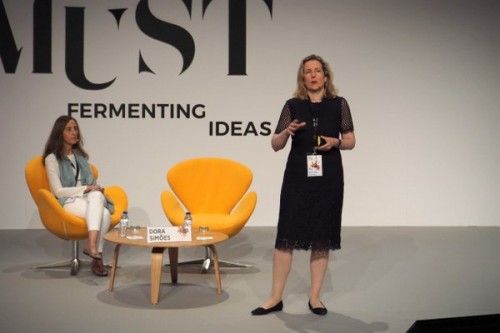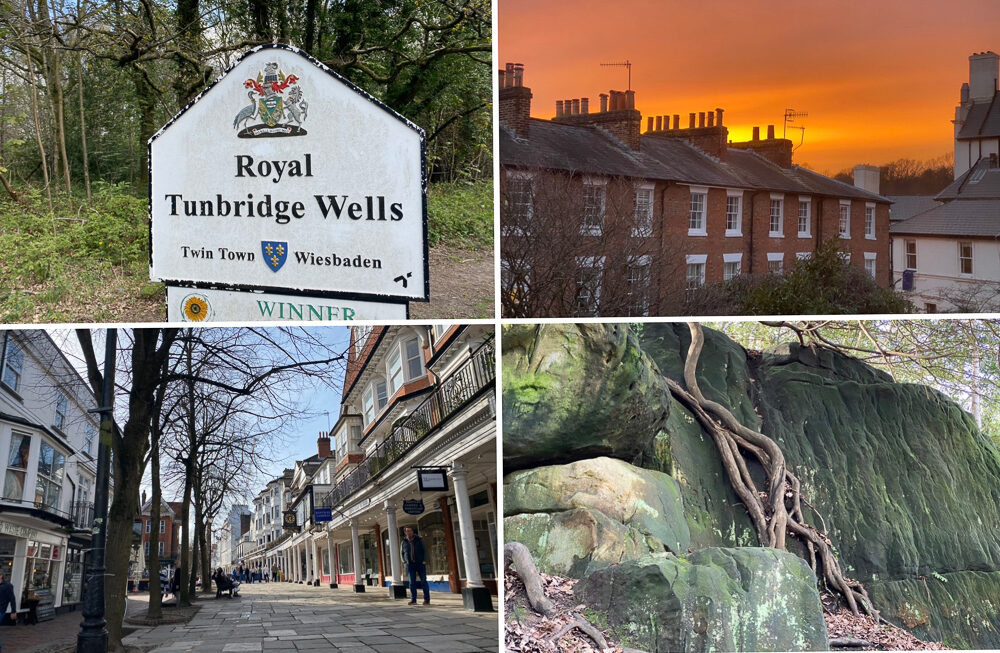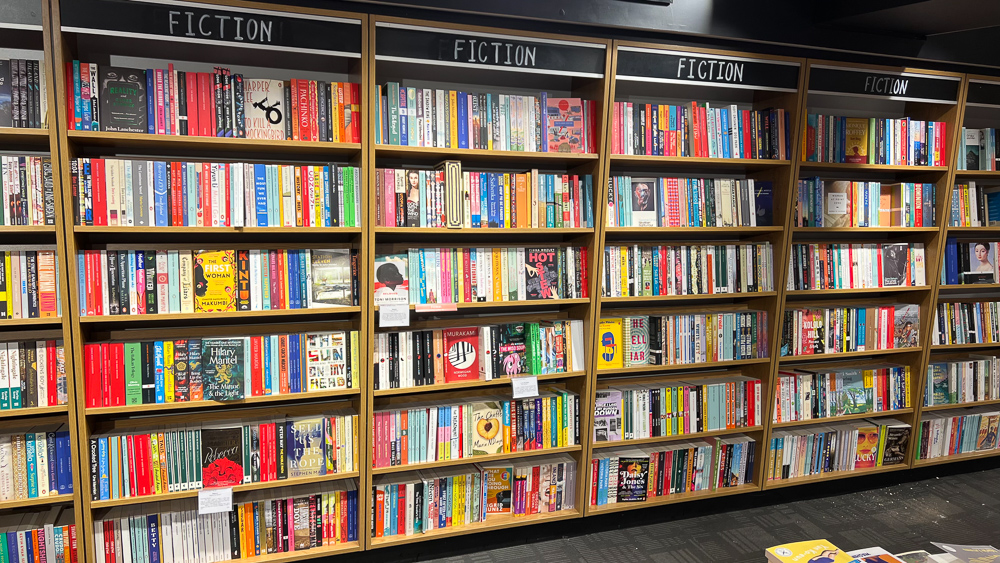
Continuing with the MUST fermenting ideas summit, I was impressed by Felicity Carter’s talk on the importance of wine tourism.
‘Journalists love catastrophes of all kinds,’ began Felicity, before outlining why she thinks the wine industry could be facing catastrophe if it doesn’t embrace wine tourism.
‘I’m going to start off with the worst wine tour in the world,’ she continued. ‘I took myself off on a tour of Australia. I can’t drive so my friends had to drive me.’ But by the time Felicity got to Tasmania she’d run out of friends, and so she looked up the internet and arranged a bus tour of the wineries with a guy called Mike and a handful of other people. ‘We visited the Tamar Valley. Tasmania is one of Australia’s coolest climate regions, and makes some of Australia’s best Pinot Noir, Chardonnay and sparkling wines so I was excited.’
She says that Mike chose six wineries very well, with good mix of large and small, they got a nice lunch and all this was just A$100. She thought it had been a great success. ‘I ended up staying in a hotel in Launceston, and everyone I was with in the tour was in the same hotel.’ Over dinner they discussed the tour and she was surprised to find that no one else had liked it at all. ‘They hated it so much they will never drink Tasmanian wine again!’
Why did they hate it? It was because everyone was being treated like a wine geek. It was the equivalent of going to an art gallery and being shown lots of pantone colours. ‘For most people without training it’s extremely difficult,’ she says. Also, we are taught from childhood that spitting is disgusting, so no one had the social comfort to spit and they were uncomfortable drinking so much. The cellar door staff had been trying to sell them wine, too. The result of all this is that everyone ended up hostile to wine tours, the region and the wines.
This is wine tourism done badly, then. But Felicity thinks that good wine tourism is going to grow in importance. ‘It is so important,’ she says. ‘It is integral to the future health of the wine industry.’
Wine tourism is a subset of experiential tourism. Most people aren’t wine geeks and they embed the wine in a larger context, which is usually gastronomy tourism, which is growing. ‘They don’t want to be treated like future wine geeks,’ says Felicity.
Experiential tourism has been boosted by cheap air fares and AirBnB, and research says that people are happier spending money on experiences rather than buying things. There’s been a rise in food culture, a quest for authenticity and the ‘TED-ification of tourism’ – people wanting to learn from their travel.
Tourism is important because according to Felicity there are some freight trucks headed for the wine industry. They are ‘very troubling trends.’
First, demographics are a worry. Consumption fallen off a cliff in traditional wine producing countries and people are producing wine they are not drinking. The result is that there’s been an emphasis on exporting to major markets such as the USA, Germany, UK, The Netherlands and China.
‘Everyone is relying on millennials to pick up the slack,’ she says. At the moment babyboomers are driving things. ‘Anyone who bought flat or house in major cities in 1970s or 1980s is now a millionaire,’ states Felicity. ‘The millennials don’t have that. Boomers have better pensions and assets.’ Millennials are much more frugal, and according to Rob McMillan, once the babyboomers are gone there will be a big dip in wine consumption.
Another freight truck is private or own label wine. ‘Private label is a terrible threat to wine,’ Felicity says, citing UK-supermarket Sainsbury’s Villetta brand which seems to mimic the label design of Villa Maria. She also cites Ogio, which is a Tesco-owned soft brand.
‘Retailers are addicted to private label because they can make so much money,’ she says. Estimates are that 20-40% of the US market is private label. From the producer’s perspective this is disastrous because if your wine is going into private label you have turned it into a commodity and you can’t build brand equity.
As a consequence, producers are targeting the on trade, which is why sommeliers are hot property. But the on trade deals in small quantities and it can be difficult to get payment.
The advantage of wine tourism is that it leads wineries directly to consumer, which is a far more profitable route to market. There are three different models of wine tourism.
1 A wine business that uses wine tourism as an add-on and a way to sell wine
2 A joint wine and tourism business
3 A tourism business where wine is the current focus but which could be switched to something else, such as craft beer
Wine tourism really started in the late 1970s with Robert Mondavi. These days, Mondavi do their tastings tutored, sitting down: it’s an experience you have to pay for. This raises the question: should you charge for tastings? Robin Back has researched this, and his conclusions are that you should. If people are interested in wine they will pay the money, and there’s evidence that when people get wine for free they are more difficult customers, and they complain more. Felicity recalls a positive encounter with wine tourism at Conn Creek in Napa. She did the blending experience tasting, where the teach people how to blend wine, and then take away their own personal blend. It costs US$125 per person and around 7000 people a year do it.
Then there’s the approach of the large Austrian cooperative Winzer Krems. They use virtual reality headsets. A tourism expert designed a 3D visual experience for them with ghosts popping up in the cellar. At the end of the tour there’s a nature documentary of the year in the vineyard and they spray different scents to the full 4D experience. Here in Portugal Sogevinus are soon to open a sensory experience with a ‘smellathon’.
There’s something to be said about becoming a tourism destination, and integrating wine into that. Abadia Retuerta in Spain decided to make themselves a destination because they are a difficult place to get to. They had a good restaurant, a hotel, a wine shop, and also a spa sommelier with special essential oils based on wine. They have a vineyard tour with special nature ‘wow’ moments created around the property. Then, at the end, there is a wine tasting.
Abrau-Durso in the Black Sea Coast region of Russia is now one of the most visited wineries in the world. It’s pretty isolated – two hours to either Krasnodar or Novorossiysk, the two large towns nearby – and so chose to become a destination. Originally built as a Champagne house of the Tsar in 1870, it fell apart in the 1980s. Putin asked his buddy Boris Titov to do something with it, and Titov spend millions renovating the property, which is based on the shores of a lake. It has 267 000 visitors a year, and as well as making 300 million bottles of Russian Champagne, it has luxury accommodation, spas, yoga and even treasure hunts in the extensive cellars.
Seppeltsfield in the Barossa Valley has reinvented itself as a destination through collaboration. It was run down and people would visit it out of pity. Then a few years back Warren Randall took it over, and invited other business to come and join in, including a famous restaurant and craft shops. It has been a fantastic success.
Felicity then looked at regional strategies, with the example of Bordeaux. Here’s a region where the conversation has been dominated by classified growths, ignoring the majority of the region’s producers. Typically, Bordeaux has been hostile to tourism, but it has realized that gastronomy tourism has taken off worldwide, and wanted to join in. The region came up with a marketing kit and produced a charter, created wine roads. They researched the people running wine tours and they began working with with cruise ships. They realized that Bordeaux could be a complicated wine offering, so set up a wine bar in the centre of town. This opened in 2006, offering some 25 wines at 2-8 € a glass, rotating the wines fortnightly. They get 76 000 visitors annually and they have franchised it to Shanghai. And there’s also the Cité du Vin, a remarkable wine museum that’s fully interactive.
Australia recently developed a much needed national strategy. They had some problems with the high Australian dollar, plus geographical isolation, plus the wine industry going through a difficult time because of chasing Parker points and the Yellowtail effect. But Australia has an exciting food and coffee culture, and the tourism authority came up with a seven pillar strategy that brought food and wine together.
Is there a downside to wine tourism? Felicity thinks that there isn’t, but in some cities tourism is becoming a form of urban blight. In some, AirBnB has driven locals out of inner cities. The local shops end up becoming tourist shops destroying the very thing people are going to see: an authentic city.
But Felicity ended with a strong message: ‘Wine tourism will be the salvation of the wine trade if they can get it right.’
2 Comments on Felicity Carter on the importance of wine tourism, at MUST


Excellent summary. I was surprised to be reminded that a “wine geek” (myself included) would want something very different from someone with a more casual interest. The best world is one in which the winery can find something of merit for everyone. On a visit to Chateau Siaurac in St. Emilion this spring, they accomplished that feat beautifully. Tour of the vineyard, gardens, chateau, winery, blending seminar and beautiful 3 course lunch. Something good for everyone!
Thank you for this summary. I own a wine tourism business in an emerging country, Georgia, and it is hard work compared to Italy. I don’t see people buying fa lot of wine on tours, so I am not sure if the industry is great for Georgians yet. I think it will be once the types of wines they try on our tours become more readily available in people’S home countries.
I always say that to succeed in wine tourism you have to remember that people are on vacation and just want to enjoy themselves. A good guide makes a huge difference in reading her guests and can scale back on wine Hewlett or turn it up.